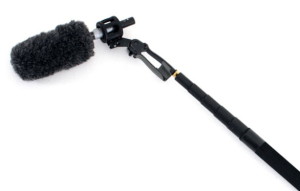What do film producers do, exactly?
 What do film producers do, exactly?
What do film producers do, exactly?
Ask any movie fan what position they’d like most in the film industry, and the chances are that
they’d choose to be a director or actor. The fact is that a film can’t be made without the producer.
The film producer is the catalyst that makes it possible for a project coming together, get through
production and release. Sounds impressive doesn’t it? So, have you ever wondered what film producers do, exactly? Well, it’s quite a lot. . . read on.
Film producers are responsible for managing every aspect of the creation and production, including
the conception and crafting of the story, acquiring funding and the artwork intended for retail
release. Even though there are a lot of other industry related professionals who help film producers,
like editors, directors and cinematographers, the film producer is the one that needs to make sure
that all of the production aspects are functioning in concert, through every stage of the filmmaking
process.
Budgeting
The budget determines how much work can be contracted out by the film producer. A tight budget could
mean that the producer will be handling everything from raising funding to organizing meals. A hefty
budget on the other hand will make it possible for the film producer to free up time that could be
better spent focusing on the bigger picture. One of these important “bigger picture” tasks would be
marketing the script to studios and/or investors in order to raise more funds for the film.
The Development Phase
Once the right to develop the source material has been acquired, the producer works with the writer
to “produce” the screenplay. As the script develops, a director is typically brought on board who
will in most cases offer input into the future development of the screenplay. The development phase
can take years without any guarantee of the project ever hitting the theatres.
On Completion of the Film
Once the film has been completed, the film producer takes control again. If they had negotiated and
come up with the funding, it is in most cases their product to promote now. An excellent producer
works with a marketing team to establish a strategy to create an audience and buzz, in addition to
submitting it for festivals and if possible a tour. Once the film is marketed, excitement has been
generated, and its earning potential has been exhibited for distributors, the film producer will
negotiate its percentage points, distribution rights and a release plan. Then, the producer will work
together with the original investors, actors and/or the director, basically anyone who has stakes in
the project, together choosing the most effective path for the film with the end results being a
healthy return on investment.
There are many things in life that aren’t certain and making a memorable film is definitely one of
them. That said, even the chance of producing a film that makes the film producer, his creative team
and investors proud makes it worth all the effort. So, what do film producers do, exactly? They
dream, they multi-task, they push through even the most uncertain times and in many cases, they
produce a fantastic film worthy of the “buzz”.


 Photo credit: rokkie.tv
Photo credit: rokkie.tv  Photo credit: blog.fnac.ch
Photo credit: blog.fnac.ch